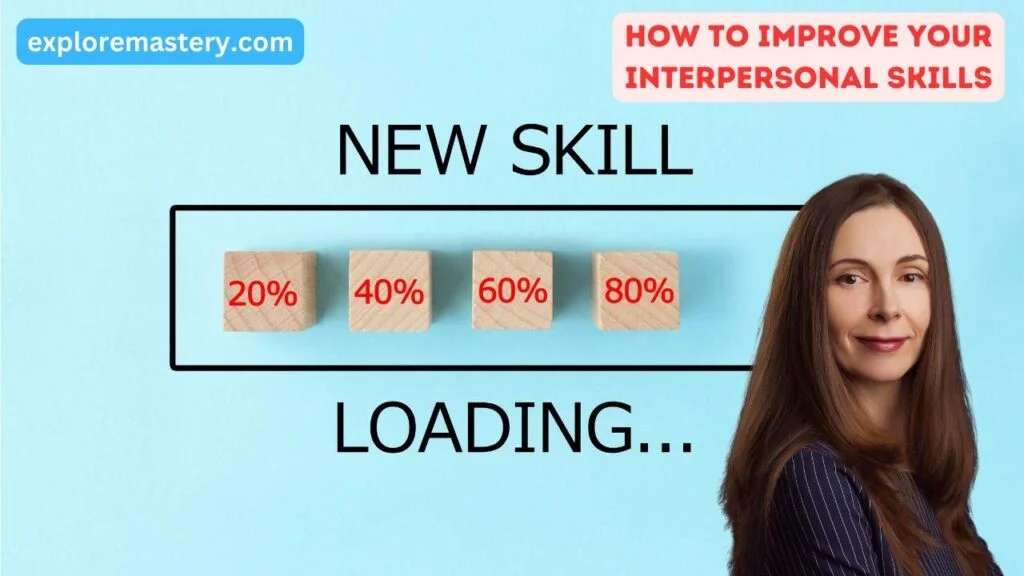Introduction
Ever had one of those days where you’re feeling on top of the world, and then—BAM!—something happens, and you feel like you’ve been knocked down a few pegs? Welcome to the rollercoaster of situational low self-esteem. Intrigued? Stick around; we’re about to unpack this emotional suitcase.
What is Situational Low Self-Esteem?
So, let’s dive right into the heart of the matter—Situational Low Self-Esteem. I know, it sounds like a mouthful, but stick with me, and we’ll break it down into bite-sized pieces. Imagine you’re a chameleon, blending in with your surroundings, changing colors based on the situation. Well, situational low self-esteem is kinda like that; it changes based on where you are and who you’re with.
First off, let’s clarify what it’s not. Situational low self-esteem is not a constant, 24/7 feeling of being down in the dumps. Nope, it’s more like a pop-up storm on an otherwise sunny day. You’re cruising along just fine, and then—wham!—you find yourself in a situation that makes you feel as small as a bug. It’s like your self-esteem has a mind of its own and decides to take a nosedive at the most inconvenient times.

Emotional Symptoms
- Feelings of Inadequacy: Picture this—you’re at a family gathering, and suddenly you feel like you’re not as successful, smart, or interesting as your cousins. Your self-esteem? Down for the count.
- Temporary Lack of Confidence: You’re at work, and your boss asks you to lead a meeting. Even though you know your stuff, your confidence decides to play hide and seek.
- Anxiety and Stress: You’re about to go on a first date, and the butterflies in your stomach feel more like stampeding elephants.
Behavioral Symptoms
- Avoidance: You dodge situations where you feel you won’t measure up. It’s like seeing a puddle and taking a detour so you won’t get wet.
- Overcompensation: You puff up your chest and act like you’re the life of the party, even though inside, you’re quaking in your boots.
- Procrastination: You put off tasks because you’re afraid you’ll mess up. It’s like having a mountain to climb but pretending it’s not there.
So, situational low self-esteem is like an emotional chameleon, changing colors based on your environment. One minute you’re green and calm, the next you’re red and anxious. But here’s the kicker: just like you can train a pet, you can also train your self-esteem to behave better. Intrigued? Keep reading, because we’re just scratching the surface.
Common Situations That Trigger Low Self-Esteem
Alright, let’s get down to brass tacks. We’ve talked about what situational low self-esteem is, but what are the usual suspects that set off this emotional tripwire? Knowing these triggers is like having a map of a minefield; you’ll know where to tread carefully. So, let’s pull back the curtain and reveal these emotional booby traps, shall we?
Social Gatherings
Ever walked into a room full of people and felt like you’re wearing an invisible cloak? Like you’re there, but not really there? Social gatherings can be a hotbed for situational low self-esteem. It’s like walking into a room and suddenly feeling like you’re auditioning for a role you never signed up for. You start comparing yourself to others, wondering if you’re funny enough, smart enough, or interesting enough to belong.
Workplace Challenges
Ah, the office—the place where self-esteem either goes to flourish or die a slow death. Ever been handed a project that feels like a mountain you’re not equipped to climb? Or maybe you’re in a meeting, and your ideas get shot down like ducks in a shooting gallery. It’s like your self-esteem is a balloon, and the workplace is filled with potential pins ready to pop it.
Academic Pressures
Remember those school days when a bad grade felt like the end of the world? Well, for some of us, those days never really ended. Whether you’re in school or taking a course to upskill, academic pressures can make you feel like you’re drowning in a sea of inadequacy. It’s like you’re in a race, but your shoes are tied together.
Relationship Conflicts
Last but not least, let’s talk love and friendships. Ever had a fight with your partner and felt like you’re the worst person alive? Or maybe a friend said something that made you question your worth? Relationship conflicts can send your self-esteem into a tailspin faster than you can say “It’s complicated.”
So, there you have it—the common situations that can send your self-esteem plunging like a rollercoaster on a downward loop. But don’t worry, knowing is half the battle. Up next, we’ll talk about how to navigate these emotional minefields like a pro.
The Psychological Mechanisms Behind Situational Low Self-Esteem
So, we’ve identified the usual suspects that trigger situational low self-esteem. But what’s going on upstairs when these triggers hit? What’s the nitty-gritty behind the emotional curtain? It’s like your brain turns into a theater, and suddenly you’re both the actor and the audience, watching yourself fumble through a script you never rehearsed. Intrigued? Let’s dive into the psychological mechanisms that fuel this emotional rollercoaster.
Cognitive Distortions
First up, Cognitive Distortions. These are the twisted thought patterns that make you see yourself and the world in a skewed way. Ever caught yourself thinking, “I messed up, so I must be a total failure”? That’s called “all-or-nothing thinking,” and it’s a classic cognitive distortion. It’s like looking at the world through a funhouse mirror; everything’s distorted.
Social Comparison
Next, let’s talk about Social Comparison. You know that feeling when you scroll through social media and suddenly feel like everyone’s life is better than yours? That’s social comparison rearing its ugly head. It’s like you’re in a never-ending race, constantly checking to see if you’re falling behind. But remember, comparing your behind-the-scenes to someone else’s highlight reel is a recipe for disaster.
Fear of Judgment
Last but not least, the Fear of Judgment. This one’s a biggie. It’s the nagging thought that people are constantly evaluating you, and let’s be honest, not in a good way. It’s like walking on a tightrope, terrified that one misstep will send you tumbling down into a pit of ridicule. This fear can be paralyzing, making you second-guess every move you make.
So, there you have it—the psychological cogs and gears that make situational low self-esteem tick. It’s like your mind becomes a complicated machine, and understanding how it works is the first step to fine-tuning it. Up next, we’ll explore how to grease those gears and get that emotional machinery running smoothly.

The Impact of Situational Low Self-Esteem
Alright, we’ve dissected what situational low self-esteem is, the triggers, and even the psychological mumbo-jumbo behind it. But let’s get real for a sec—what’s the fallout? What happens when this emotional hiccup turns into a full-blown coughing fit in your life? It’s like setting off a single domino and watching it topple a whole intricate setup. Intrigued? Buckle up, because we’re diving into the impact zone.
Short-Term Consequences
First off, let’s talk immediate repercussions. In the short term, situational low self-esteem can make you dodge opportunities like Neo dodges bullets in “The Matrix.” You might skip that party where you could’ve met some amazing people. Or perhaps you’ll pass up a work project that could’ve been your stepping stone to a promotion. It’s like standing at the edge of a diving board but never mustering the courage to jump.
Long-Term Consequences
Now, what about the long haul? Well, if you let situational low self-esteem fester, it can morph into chronic low self-esteem. And trust me, that’s a swamp you don’t want to get stuck in. It can affect your mental health, relationships, and even your career trajectory. It’s like a snowball rolling down a hill, gathering size and speed until it becomes an avalanche.
Quality of Life
And let’s not forget the overall impact on your quality of life. When you’re constantly second-guessing yourself, life loses its luster. Simple joys become complicated. It’s like wearing sunglasses indoors; everything seems dimmer than it actually is. You might find yourself settling for less—less joy, less love, less success—simply because you don’t think you deserve more.
So, there it is—the domino effect of situational low self-esteem. But here’s the good news: recognizing the impact is the first step in setting up new dominoes, ones that lead to confidence, joy, and fulfillment. Ready to reset your emotional dominoes?
Coping Strategies: How to Navigate Situational Low Self-Esteem
So, we’ve dissected the beast that is situational low self-esteem, from its triggers to its impacts. But enough with the doom and gloom, right? Let’s roll up our sleeves and get down to the business of taming this emotional beast. Think of this as packing your emotional survival kit. Ready to become the Bear Grylls of your inner world? Let’s dive in!
Self-Awareness and Mindfulness
First up, Self-Awareness and Mindfulness. These are your emotional compass and map, helping you navigate through the murky waters of low self-esteem. How do you boost self-awareness? Simple: Listen to yourself. Tune into your thoughts, feelings, and bodily sensations. Journaling can be a game-changer here. It’s like having a heart-to-heart with your soul, on paper. And let’s not forget mindfulness techniques like deep breathing or meditation. A few minutes can help you tune into your emotional frequency like a radio dial finding the perfect station.
Cognitive Behavioral Techniques
Next, Cognitive Behavioral Techniques. Think of this as your emotional Swiss Army knife, versatile and indispensable. The idea is to identify those twisted thoughts we talked about earlier and challenge them. Replace “I’m a failure” with “I made a mistake, and that’s okay.” It’s like swapping out a flat tire on a car; you’re not going anywhere productive with those deflated thoughts.
Social Support and Communication
Last but definitely not least, Social Support and Communication. This is your emotional first-aid kit. Sometimes, a kind word from a friend can be the emotional Band-Aid you need. Don’t bottle up those feelings; share them with someone you trust. It’s like letting out steam from a pressure cooker before it blows its lid. And hey, if things get too hot to handle, professional help is always an option. Therapists and counselors are like emotional firefighters, ready to help you douse those flames.
So, there you have it—your emotional survival kit to navigate the wild terrain of situational low self-esteem. With these tools in your arsenal, you’re not just surviving; you’re thriving!
Tips for Building Resilience in Specific Situations
We’ve been on quite the emotional safari, haven’t we? From identifying situational low self-esteem to packing our emotional survival kits, we’ve covered a lot of ground. But now, let’s talk about leveling up. How do you build resilience in those specific situations that make your self-esteem wobble like a Jenga tower? Think of this as forging your emotional armor, one piece at a time. Ready to become the knight in shining armor of your own life story? Let’s get to it!
Social Gatherings
First up, Social Gatherings. The trick here is preparation. Before you step into that room full of people, take a few minutes to center yourself. Deep breathing, positive affirmations, or even a quick call to a supportive friend can work wonders. It’s like putting on your emotional makeup; you’re setting the tone for how you want to feel.
Workplace Challenges
Next, Workplace Challenges. Here, knowledge is power. The more prepared you are for that meeting, presentation, or project, the more confident you’ll feel. Do your homework, practice, and maybe even seek advice from a mentor. It’s like studying for an exam; the better prepared you are, the less room there is for self-doubt.
Academic Pressures
For Academic Pressures, the key is perspective. A bad grade or a tough assignment doesn’t define you. Take it as a learning opportunity. Review your mistakes, seek help if needed, and move on. It’s like falling off a bike; you dust yourself off, figure out what went wrong, and get back on.
Relationship Conflicts
Lastly, Relationship Conflicts. Communication is your best friend here. Instead of stewing in your feelings, talk it out. Whether it’s with your partner, friend, or family member, open dialogue can often defuse emotional bombs. It’s like opening a window in a stuffy room; it lets the fresh air in and clears the atmosphere.
So there you have it, folks—your guide to forging emotional armor for those tricky situations. With these tips, you’ll not only survive those emotional battlegrounds but come out as a seasoned warrior.
Conclusion
Wow, what a journey we’ve been on, right? We’ve dug deep into the maze of situational low self-esteem, unmasked the triggers, and even packed our emotional first-aid kits. It’s like we’ve been on an emotional treasure hunt, and guess what? The treasure is you—your well-being, your peace of mind, and your unshakeable self-esteem.
So, what’s the big takeaway here? Well, self-esteem isn’t just a feel-good buzzword; it’s the cornerstone of a fulfilling life. It’s like the roots of a tree; the deeper they go, the taller the tree stands. And just like a tree faces storms, droughts, and maybe even the occasional pesky squirrel, you too will face challenges. But with strong roots—aka solid self-esteem—you can weather anything life throws your way.
Remember, situational low self-esteem isn’t a life sentence; it’s more like a detour on your journey to becoming the best version of yourself. And now that you’re armed with strategies, you’re not just dodging pitfalls; you’re paving your own road to emotional resilience.
So, are you ready to take the wheel and steer your life in the direction you want? Your future self is already giving you a standing ovation!
Loved what you read? Got your own stories or tips? Drop a comment below and let’s keep this convo going. And hey, if you found this useful, why not share it with someone who could use a boost?
Interesting Articles
How to improve self-esteem?
What is corporate entrepreneurship?
Entrepreneurship Development Program Meaning



